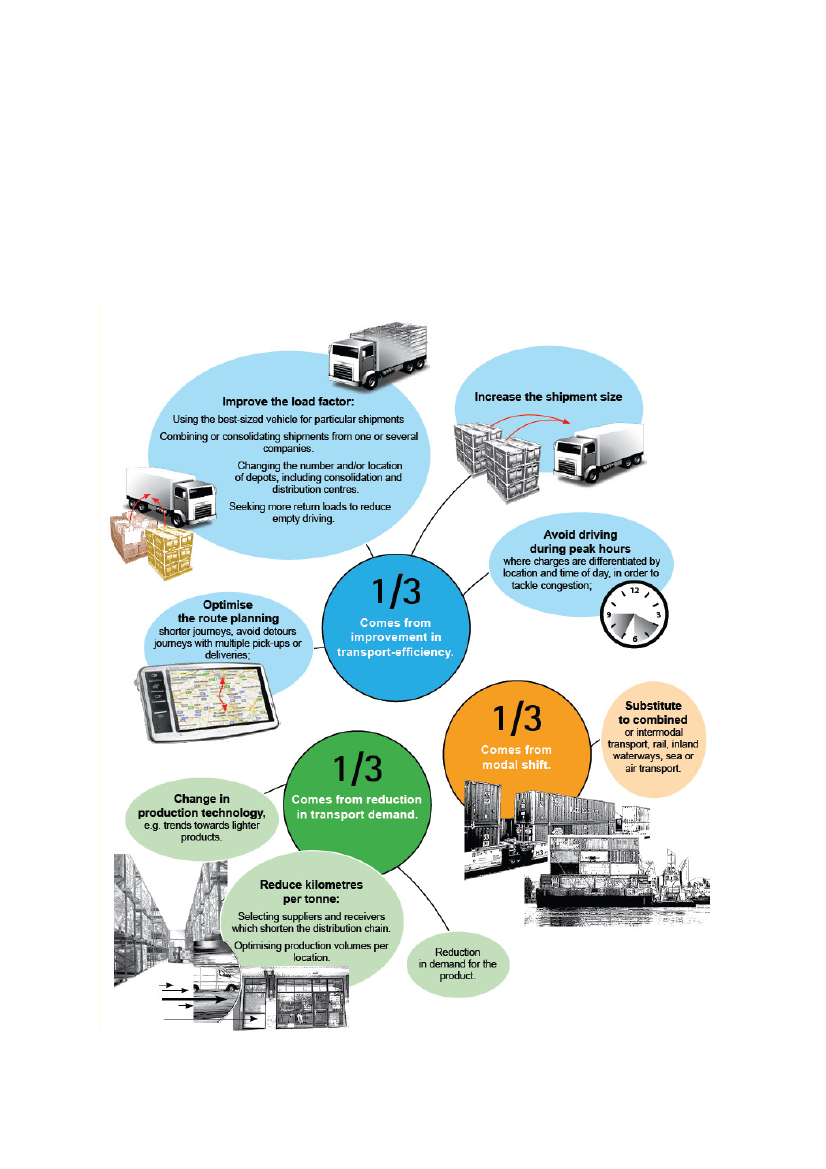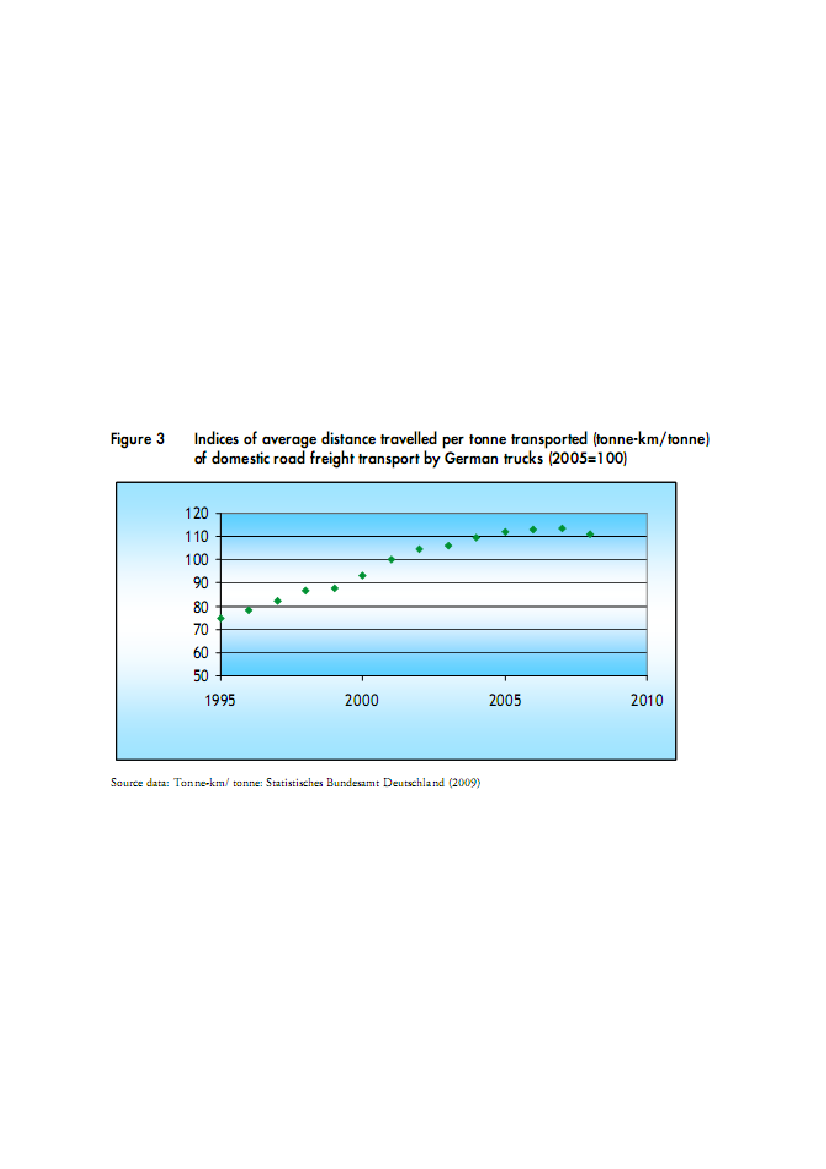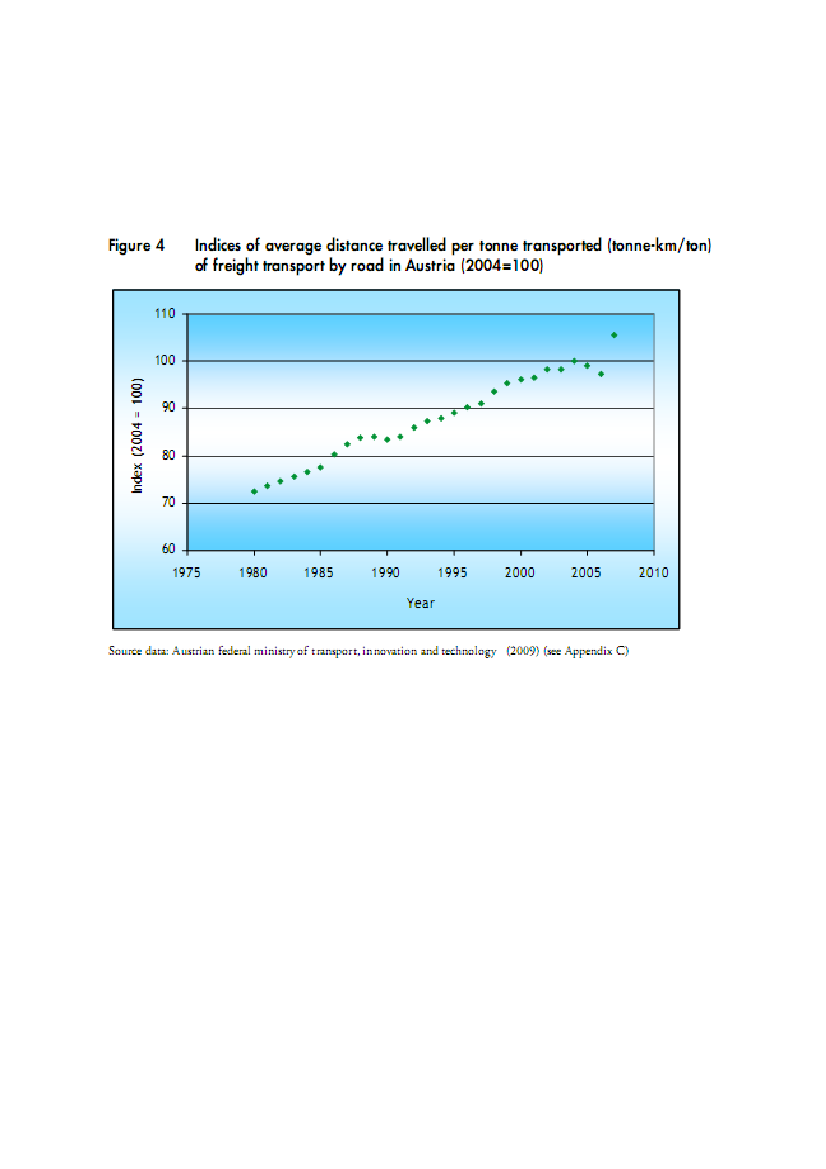Transportudvalget 2011-12
TRU Alm.del Bilag 147
Offentligt








Understanding the effects of introducing lorrycharging in EuropeJuly 2010BackgroundFrom July 2010, the Belgian Presidency of the European Union is set to restart talks on arevision of the EU rules that govern national road charging schemes, the so-calledEurovignette directive.The debate over the latest proposal to revise the law, has centred on whether memberstates should be allowed to include external costs, such as the costs of climate change, andcongestion caused by lorries into road charges. Such a move would be in line with thepolluter pays principle.iThe road industry has argued against this, saying the ‘polluter pays (but the) problem stays’,in other words, higher fees would not reduce pollution or congestion. This reflects the falseassumption that road freight transport demand is relatively ‘inelastic’ – meaning that it doesnot react strongly to changes in price.In fact there has been remarkably little research that explains how and why demand for trucktransport reacts to price changes. This suggests a number of important questions on theimpact of introducing kilometre charges:•Will the number of trucks on the road and the distances they travel decrease?And by how much?•Will roads become less congested, safer and freight transport less polluting?•What is the effect on revenues?To answer these questions T&E commissioned the consultancySignificanceto investigate towhat extent hauliers and shippers respond to changes in transport costs, and what happensto overall demand for freight transport by road if prices change.iiThe study examines allrelevant scientific sources on the sensitivity of road freight demand to price changes (‘priceelasticity of demand’ in economic parlance), and checks the results against evidence fromthe lorry charging schemes already in place in Germany, Austria and the Czech Republic.The study ‘Price sensitivity of European road freight transport – towards a betterunderstanding of existing results’ by Signifiance and CE Delft can be downloaded fromwww.transportenvironment.org/lorry-charging.
Effects and effectiveness of lorry chargingCharging lorries for each km driven, to reflect the costs they impose on infrastructure (“usercharging” which is allowed under the current Eurovignette Directive 2006/38/EC) and / or toinclude the external costs of congestion, pollution and accidents, has a direct effect on theprice per vehicle-km.The key findings of the study are as follows:Result 1: A €0.15/km charge will reduce vehicle kilometres by 15%The study reports a central value for vehicle-km price elasticity of demand of-0.9.
To take apractical example, if average EU road freight costs are around €0.88 per km and a countryintroduces a charge of €0.15/km this would represent a 17% price rise. The correspondingreduction of vehicle-km would be (17 x 0.9 =) 15%. As a result of the reduction of vehicle-km, there would also be a corresponding decrease in fuel consumption and greenhouse gasemissions.Result 2: Most of the reduction in vehicle-km results from more efficient roadtransport operation and optimised chains of distribution. Only one-third of thereduction can be attributed to freight moving to other modes (modal shift).A major part of the effect is thereforewithinthe road freight sector. (see Figure 2).Result 3: although transport demand is sensitive to prices, total revenues from roadcharging are not severely affected.A km-charge is intended to manage vehicle-km and the corresponding negative impacts.This study demonstrates that such charges are effective at achieving these objectives.Member States must take this into account when making revenue projections for roadcharging schemes. If, as in the example above, vehicle-km fall by 15% as a result of thecharge, then the charge will be raised and revenue collected on 85% of the initial totalvehicle-km.Figure 1
Why do vehicle-km go down as a result of road charges?The road freight sector (hauliers, transporters, shippers, logistics companies) can react in anumber of ways to an increase in vehicle-km prices. The study demonstrates that thereduction in demand is explained by three factors:
Real world evidence – GermanyThe introduction of road charging in Germany led to a slowing and then a reversal of
average distance travelled.
National transport statistics show that in Germany the average distance travelled per tonneof freight had been steadily increasing by around 3% per year from 1995 until introduction ofthe Maut in 2005. At that point, the trend towards increasing distances was slowed and theaverage distance even decreased slightly (0.5%) in 2008, in proportion to the overallaverage price increase.Prior to the introduction of the Maut road freight price increases of around 15% werepredicted, in fact transport prices increased by only 0.5% on average. Given that the Maut isbased on driven kilometers, it is logical that hauliers, shippers and transporters take action toreduce distances driven, either by improving their route planning or changing trade patterns.
Real world evidence – AustriaThe Austrian ‘Lkw-Maut’ has been in place on highways since 2004, and applies to allvehicles over 3.5t. The figure below illustrates the change in distances driven, and an abruptbreak in 2004 to the previous trend towards increasing distances.
During the period 2004-2006, a decrease in average distance travelled per tonne is seen, ofabout 3% per year. As in Germany, tonnes transported remained roughly constant, but thedistances decreased. However, in Austria the previous trend appears to have resumed in2007, when a km-charge for lorries was introduced on Czech motorways. Some of thedistance effect on Austrian highways could be attributable to traffic diversion to the CzechRepublic, which returned once a km-charge was also introduced there.Importantly, the Austrian figures also indicate some modal shift from 2004, when railtransport grew 2% faster than road transport. The effect on modal share is particularlyevident and relevant for national transport. This could be explained by the fact that theAustrian Maut has a more limited effect on the overall vehicle km costs of internationaltransport companies, so it is economically more interesting for companies engaged innational transport to look into shifting volumes to rail. However, with the introduction of theGerman Maut in 2005, this also became more relevant for longer distance, cross-bordertransport decisions.
Real world evidence – Czech RepublicA km-charge was introduced for vehicles over 12 tonnes on motorways and expressways inthe Czech Republic from 1 January 2007. The volume of heavy goods traffic on these roadsis seen to have decreased by 10% following the introduction, even with impressive economicgrowth rates during that period.However, it is assumed that this includes some diversion of heavy goods traffic from thetolled roads to minor roads (and into neighbouring countries, particularly Slovakia which thenintroduced its own km-charges in January 2010). Since the magnitude of this diversion effectis not yet clear, it is not possible to draw conclusions on the overall impact of the km-chargeon transport volume in the Czech Republic.
ConclusionsThe study shows clearly that road freight transport demand is relatively ‘elastic’,
meaning that demand does react directly to changes in price. Road charging is
therefore an effective measure to reduce congestion, pollution and accidents from
lorries.
The study shows that road freight transport demand is sensitive to price changes, andexplains the ways in which hauliers, shippers and transporters are likely to react:•For the most part price rises will be absorbed by efficiency gains within the roadsector, for example by improved route planning, increased load factors orreorganisation of locations in the production and distribution chain over the longerterm.•The remaining part (one-third) of the reaction to price changes is likely to be a shifttowards competing modes (modal shift).•As demand drops in relation to the price rise, this effect needs to be accounted for inrevenue expectations of road charging schemes.The conclusions of academic (theoretical) studies are broadly confirmed by the experiencesof road pricing schemes for lorries in Germany, Austria and the Czech Republic. This leadsto important conclusions about the likely effectiveness of road pricing scheme for lorries inEU Member States:•The ‘price signal’ sent by road charging is effective at reducing demand for roadfreight transport: demand for vehicle-km drops in relation to the price change.•The major effect is the reduction in distances travelled by lorries, and not a reductionof tonnage, meaning that road charging does not hamper trade.•Efficiency within the road freight sector will increase; the current wasteful planning –manifested especially in poor load factors and empty driving – will be tackled as apriority.•Since the negative impacts of road freight transport, congestion, accident risk, air andnoise pollution, are directly proportionate to total distances driven (vehicle-km), thesewill also be reduced.
Policy recommendationsThe flexibility of Member States to allow road charging schemes for lorries to tacklecongestion, safety and pollution problems by reducing distances driven should bemaximized.With regard to the ongoing revision of the Eurovignette directive, allowing Member States tointernalise the external costs of congestion and pollution (and accidents and climatechange), will enable their schemes to be even more effective at tackling these problems, inproportion to the level of the charge.
‘Polluter pays’ means making the party responsible for pollution responsible for paying for thedamage done to the natural environment, and to society at large. In the case of charging for the useof road infrastructure, the theory is that by making users pay for the external costs of their action, thenegative impacts will be reduced as users seek to avoid paying the charges to the maximum extentpossible.Note on methodology: The study investigated long-term effects in European (long distance) roadfreight transport, as this is most relevant for EU decision-making. Looking at the longer term meansthat the full effects in terms of transport and logistics optimization can be identified.ii
i








